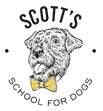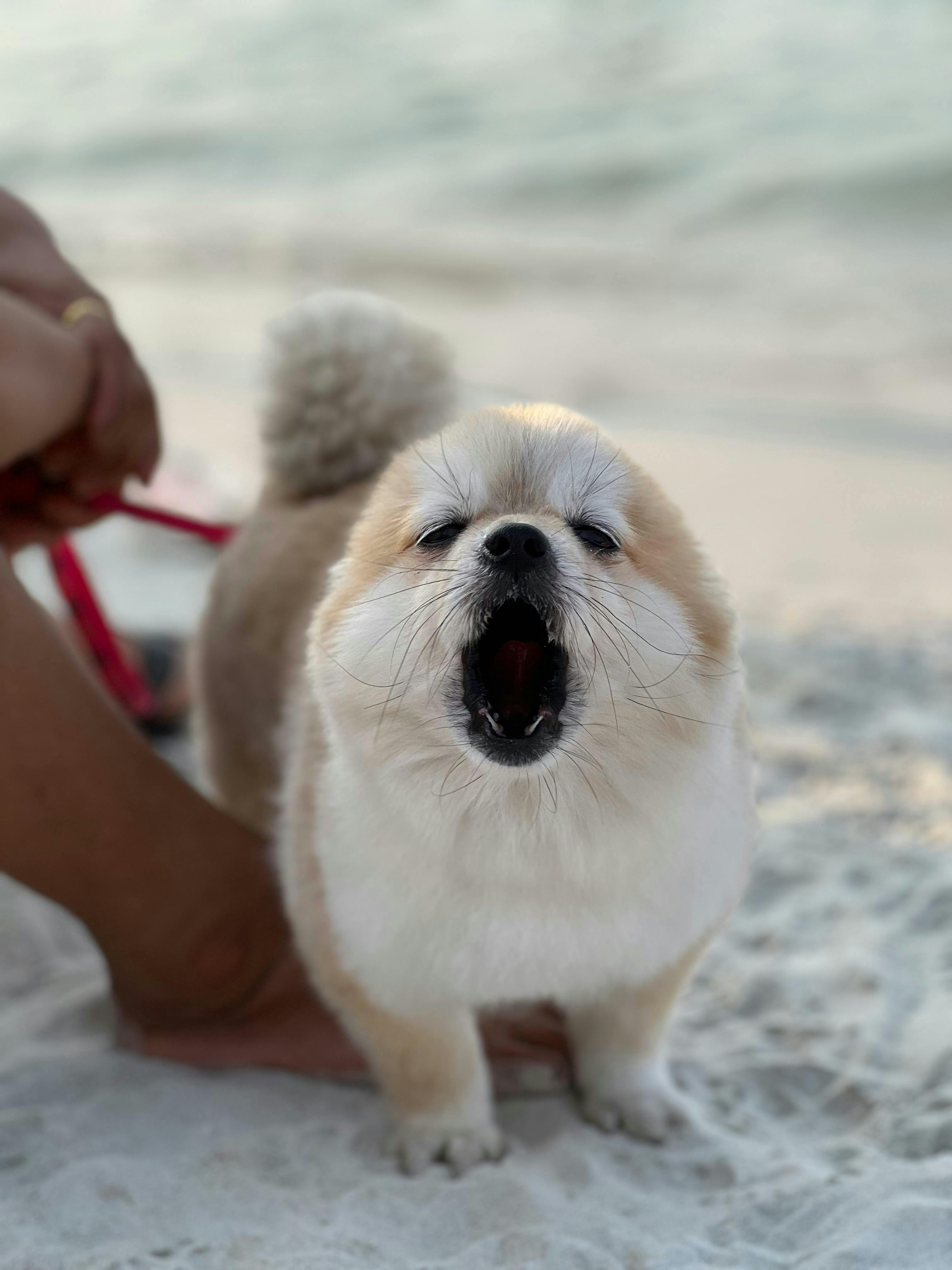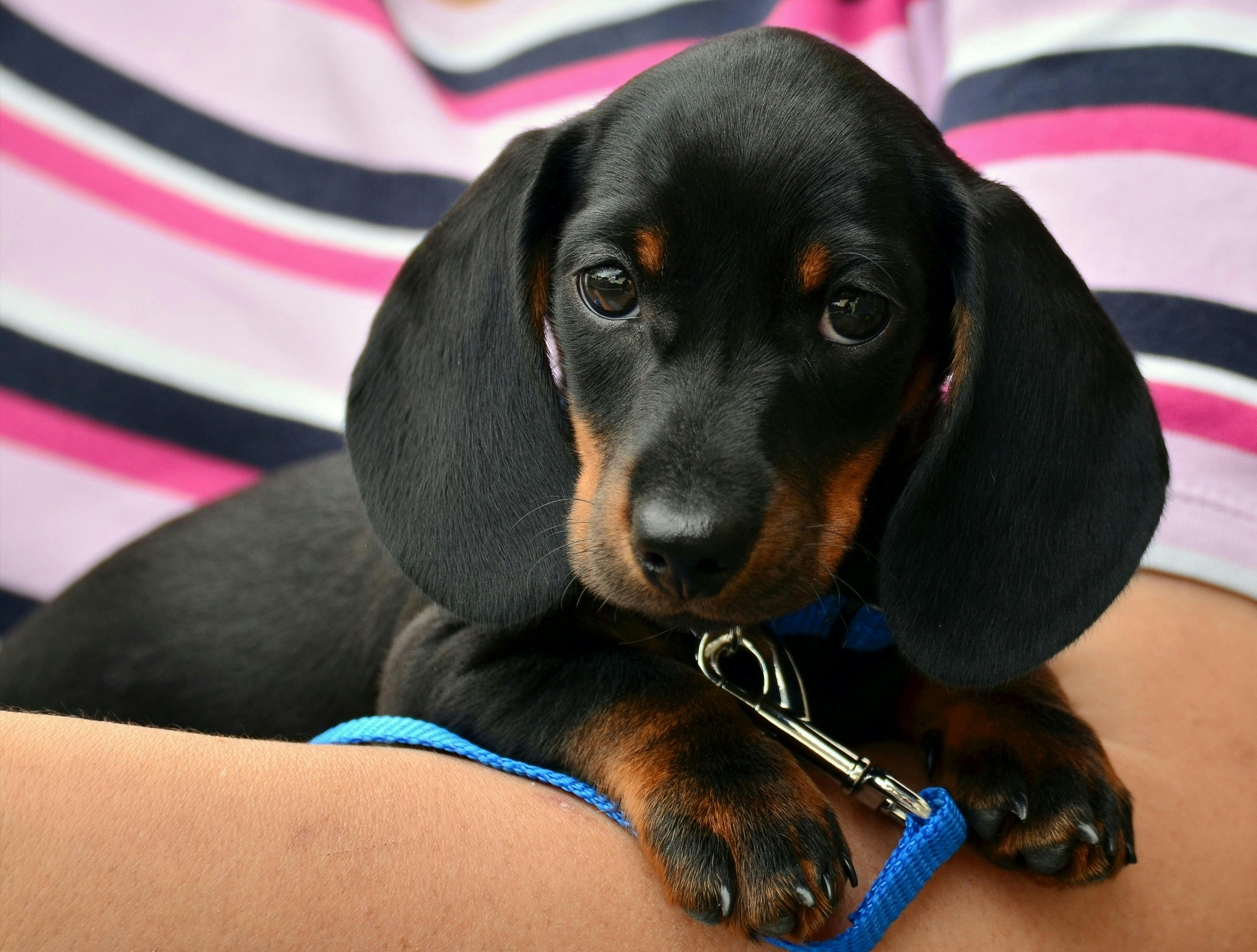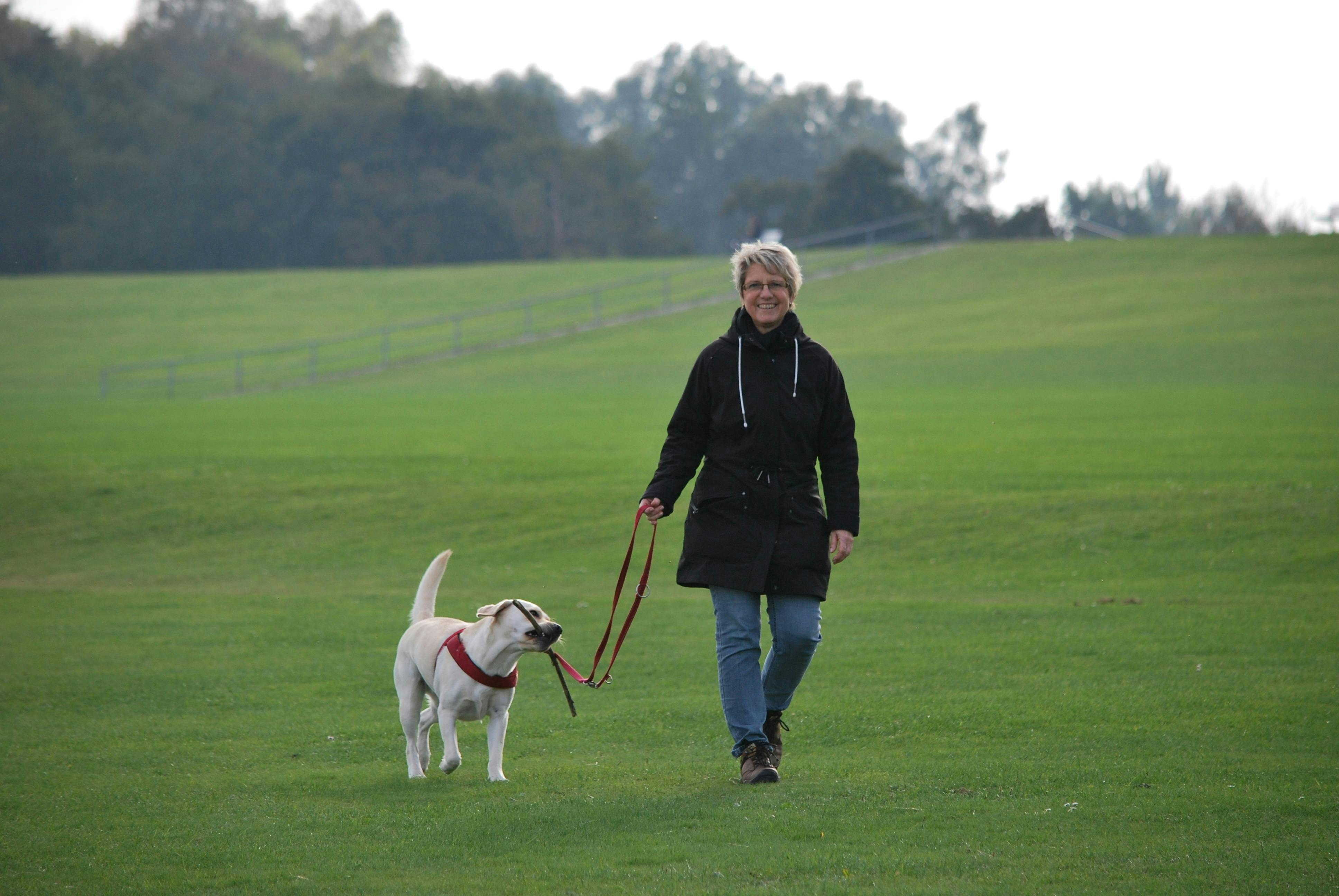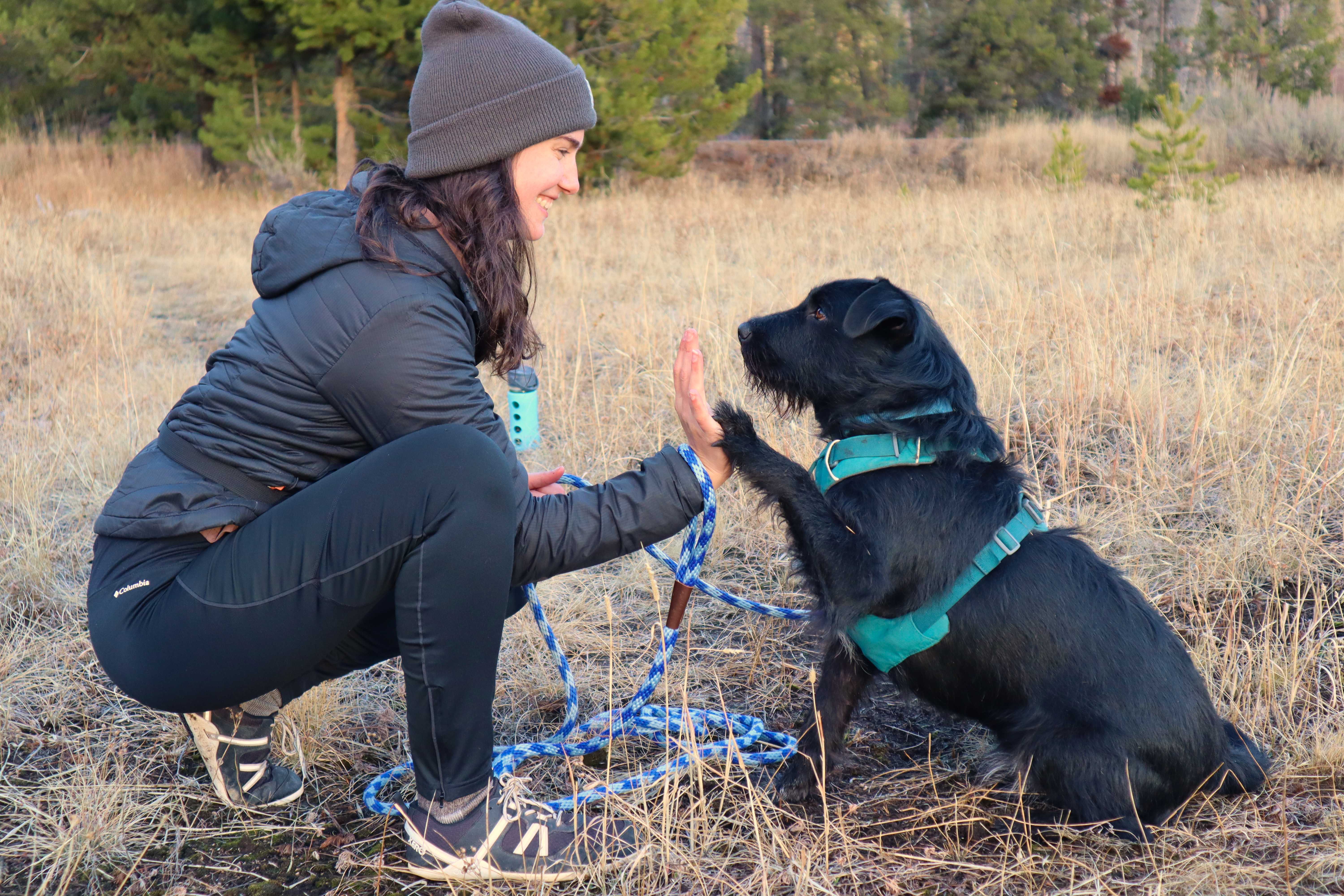Reactive Dog Management: How and Why to Train a Hand Target
Reactivity | By: TAYLOR WYLLIE, KPA CTP | Mar 07, 2025

Get Your Free Reactive Dog Masterclass
Unlock the secrets of rehabilitating your reactive dog with this masterclass video
What is a Hand Target?
A hand target is exactly what it sounds—having your dog touch their nose to the palm of your hand (you could also teach them to target a finger, if you would prefer).
It's typically easy to teach—most dogs are curious and will naturally go to sniff your hand if you present it to them.
As your dog improves, you’ll be able to hold your hand at a greater distance, and they will come to boop their nose against it. They’ll also start following your hand.
A hand target is my favorite thing to teach clients. It's easy to do with huge benefits, particularly for our more sensitive dogs. Plus, it's super cute.
Why you Should Teach Your Reactive Dog a Hand Target
Let’s start with the biggest reason I teach this to all my clients with reactive dogs—it helps keep your dog under threshold.
If you have a reactive dog, you are probably familiar with the term threshold. If you're not let me briefly explain. When your dog is over their threshold, they start to display those frustrating reactive behaviors—the barking, lunging, growling, etc. When your dog is under their threshold, they aren't feeling stress. (It's really more of a spectrum than that but for our purposes today let's just go with the simple definition.)
Preventing your dog from going over their threshold is key in reactive rehabilitation. Not only because stress begets stress, but because the more your dog practices their reactive behaviors the more engrained they become.
A hand target helps keep your dog under their threshold because it can distract your dog while you move past a trigger. A dog focusing on booping your hand with their nose won't notice that dog walking across the street.

Additionally, dogs tend to build more stress when they’re stuck in a stationary position, like a sit. By moving their bodies, they can work through that stress—just like we do. Ever find yourself pacing during a tough phone call or tapping your fingers in the waiting room at the dentist? Same idea. To get your dog moving simply offer your hand in different spots to encourage your dog to walk back and forth.
A hand target is also super helpful for getting your dog into different positions without having to physically move them. Whether it’s into the car, into a crate, or onto the scale at the vet’s office, a hand target makes it easier. This is a great tool for all dogs, but especially for our reactive ones who may be extra sensitive to touch.
Finally, a hand target is a great way to teach your dog to walk on a loose leash. That's not something I'll get into today—a blog post for another time—but it's worth mentioning if this is something you struggle with.
Sold yet?
Before we jump into teaching the hand target, a quick heads-up—this behavior won’t do much for your reactive dog unless it’s trained to fluency. By that I mean, you and your dog should have this down pat before you try using it in real-life situations.
Now, let’s dive in!
How to Train a Hand Target
A hand target is one of the easiest—and in my humble opinion, one of the most fun—behaviors to teach your dog. If anything feels confusing to you, I encourage you to watch the video above to see these steps in action.
- Hold your hand close to your dog’s nose. When they lean in to sniff it or simply look at it, say ‘yes’ and treat. (You could use a clicker instead of saying yes, if you would like.) Repeat until your dog is consistently moving toward your hand and occasionally making contact with their nose to your hand. If your dog won’t reach out to sniff your hand, try moving your hand even closer or making your hand smell like treats. Right now, reward any “interaction” with your hand—even if it’s a look—so that you build confidence and teach your dog the training “game.”
- Only say “yes" and reinforce with a treat when your dog actually makes contact with their nose to your hand. Repeat until your dog offers the behavior consistently (they do it correctly 8 out of 10 times). Make sure your dog is moving their nose toward your hand, instead of you moving your hand toward your dog’s nose.
- Move your hand further away—back another inch or two, an inch to the left or the right, slightly beneath their nose, and slightly above.
- (Optional) Add a cue by saying ‘touch’ just before your dog reaches their nose toward your hand. This is optional, but it is nice to have a verbal cue alongside the physical cue of holding out your hand, so you can use it when your dog isn't looking at you.
- Increase the distance from which you ask for the behavior.
- As your dog moves toward your hand, gradually move it away so they practice following it. At first, don’t ask them to follow your hand too far before saying "yes" and rewarding with a treat. If you push them too much, they might get frustrated and give up.
- Practice around non-triggering distractions such as other people in your family, while you're pretending to be on your phone, in the backyard, etc. The more distractions you train around, the better your dog will be at the behavior.
Hand Target Training Tips
- The best place to train is in a quiet, distraction-free environment. Once the behavior has been established, you can work in increasingly difficult environments around distractions.
- Practice in really short sessions—only 1 to 2 minutes at a time a few times a day.
- Dogs feed off of our energy, so try to have a calm and positive demeanor when training. If you’re getting frustrated, simply take a break.
Conclusion
Teaching a reactive dog to target your hand is a powerful tool for all reactive dog guardians. And it happens to be super simple to teach. Just be sure to practice until it’s second nature before testing it out around your dog's main triggers.
Good luck and happy training!
